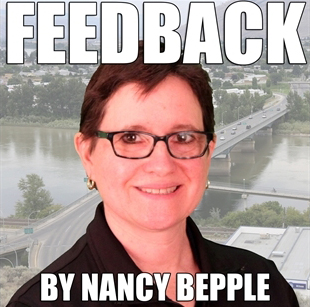
Image Credit: Compilation/Jennifer Stahn
October 23, 2015 - 7:35 AM
Congratulations go out to all the candidates of the last election. Win or lose, political candidates represented their parties and gave people the opportunity to choose the direction they wanted things to go. Best wishes to Conservative Cathy McLeod. The hard work has just begun.
As a country, the choice was resoundingly the Liberal Party. But here in Kamloops, what people wanted was far more divided, with Conservative Cathy McLeod garnering 35% of the vote, NDP Bill Sundhu 31%, Liberal Steve Powrie 30%, and Green Party Matt Greenwood 4%. While McLeod had the most votes, it was effectively a three way split of the vote. McLeod took the seat, but just under two-thirds of the voters supported someone else.
For McLeod, there must be relief that she managed to retain her seat despite dropping 17% in the polls. Powrie, though not a winner, increased his party share almost 25%. Meanwhile, there was a drop of about 6% for support for Sundhu and NDP. Conservative supporters take cold comfort in knowing that their party kept the seat, but barely. Liberals had the best result in at least a decade in this riding. The NDP will need to regroup for the next round.
These types of elections often cause people to call for electoral reform. They argue that voters’ wishes are not being met. True enough that clearly McLeod did not have overwhelming support.
That’s how typically this riding votes. While McLeod won the riding by 52% in 2011, you have to go all the way back to 1988 to find an election where one party took more than 50% of the vote in this riding. That’s when NDP Nelson Riis was elected with 52%. Since then, except for in 2011, no one party dominated the riding. People in this riding have divided views on how things should be done.
But electoral reform, whether it is proportional representation or a ranking of candidates might not be the issue here in the Kamloops-Thompson-Cariboo riding.
Across Western Canada, Tories won in rural areas, while Liberals and NDP took the larger cities. But Kamloops-Thompson-Cariboo riding is a combination of both urban and rural. Rural voters tend to give more support to the Conservatives. Urban voters are more progressive.
Rather than electoral reform, what the people in Kamloops-Thompson-Cariboo should be pushing for is boundary reform. Currently, with a population of 119,000, the riding is the second largest in B.C., surpassed only by North Okanagan-Shuswap. Compare this to ridings like Regina–Qu'Appelle at 72,891, Winnipeg-Centre at 82,026, Kenora at 56,000, or Charlottetown at 35,000.
To argue over electoral reform, when there is such discrepancies in the amount of representation is ludicrous.
There are other large ridings in Canada besides Kamloops-Thompson-Cariboo, but not many. Out of 338 ridings in Canada, only 18 have more population than this riding. Not only that, the ridings that have large populations tend to be dense urban areas like Mississauga, Windsor, Oshawa and Guelph.
The issues in Kamloops are different than those of the rural areas around it. No one is well served by having a massive geographic area and a high population served by one member of Parliament.
Rather than electoral reform, I think it is time to make sure both the voices of urban and rural voters are heard. There will always be differences in how people think things will be done. Anyone who thinks one political party has all of the answers needs to take a step back and realize there are others who think differently, and they could easily be their next door neighbour.
But with Kamloops-Thompson-Cariboo larger than many European countries, what we need to look at is ensuring Kamloops and area have fair representation.
News from © iNFOnews, 2015